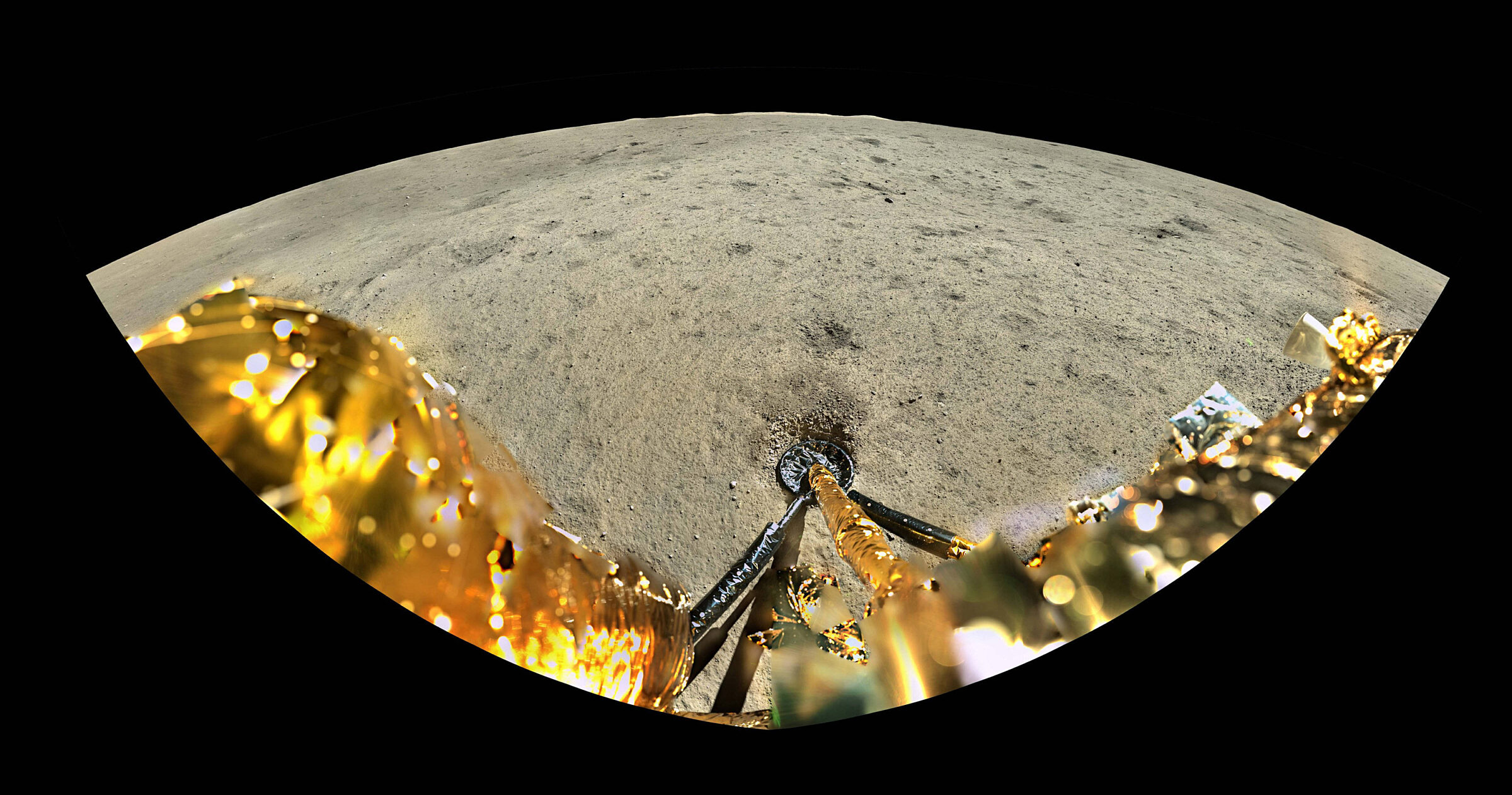Chang'e-6, collecting the first lunar farside samples
Highlights
- China's Chang'e-6 spacecraft successfully brought back the first samples from the far side of the Moon.
- The spacecraft landed on the lunar far side on June 1, 2024, collected rock and regolith samples, and launched them to eventually return to Earth nearly a month later.
- Since the far side of the Moon is very different from the near side and much less explored, the samples Chang’e-6 brought back could provide a powerful window into the history of the Moon, Earth, and wider Solar System.
Why sample the far side of the Moon?
The far side of the Moon could hold clues to the early history and evolution of the Moon and, by extension, the Earth and wider Solar System. By bringing back the first-ever samples from the far side, the Chang’e-6 mission explored a new area of the Moon and will further our understanding of where we come from.

Chang’e-6 landed in the South Pole-Aitken Basin, a massive and roughly 4-billion-year-old crater covering a vast portion of the far side of the Moon. The samples Chang’e-6 collected there could include pieces of the Moon’s interior that would have been excavated by the giant impact that formed the basin, which stretches over roughly 2,500 kilometers (1,600 miles). That would offer an unprecedented glimpse into what the Moon is like on its inside.
The samples Chang’e-6 brought back from this area could also provide insight into whether and why volcanic activity appears to have ceased on the far side of the Moon much sooner than on the nearside. They might also help explain other asymmetries between the two lunar hemispheres.
Though the far side of the Moon holds great scientific promise, it is harder to explore the far side of the Moon than the near side. Communication signals from Earth can’t directly reach the far side, so relay satellites have to be launched ahead of any mission. Humanity had only soft-landed a spacecraft there once prior to Chang’e-6, when the Chang’e-4 spacecraft touched down in 2019. It relied on a satellite named Queqiao (“Magpie Bridge”). Chang’e-6 operated off a similar relay, Queqiao-2.

What did Chang'e-6 do?
Chang’e-6 launched from the coastal Wenchang spaceport on a Long March 5 rocket on May 3, 2024. The four-part spacecraft — a service module, lander, re-entry capsule, and ascent vehicle — entered lunar orbit several days later. On June 1, the lander touched down on the lunar surface at Apollo Basin, an impact crater within the larger South Pole-Aitken Basin.
The lander drilled down into the Moon, then used a robotic arm to collect rock and soil. It transferred the sample to an ascent vehicle that took off from the Moon two days later and went on to dock with the service module in orbit. There, the sample was transferred again into a re-entry capsule, and the service module eventually made its way back to Earth. The capsule touch down in China on June 25, 2024.
Chang'e-6 did other science, too. The lander carried the Detection of Outgassing RadoN (DORN) instrument, built by France to detect radon outgassing from the Moon's crust, and the INstrument for landing-Roving laser Retroreflector Investigations (INRRI), a passive laser retro-reflector. Chang’e-6 also hosted the Negative Ions at the Lunar Surface (NILS) payload, which aimed to detect negative ions emitted from the lunar surface as a result of interaction with the solar wind. NILS was developed in Sweden with European Space Agency support.

In addition to these instruments on the lander, Chang'e-6 released the ICUBE-Q cubesat into orbit around the Moon. ICUBE-Q is a collaboration between the Institute of Space Technology, Pakistan’s Space & Upper Atmosphere Research Commission, and Shanghai Jiaotong University.
Surprise rover
After launch, China shared a picture of the Chang'e-6 spacecraft stack that showed a small rover attached to the lander. The rover had previously been kept secret, but later deployed and took pictures of the Chang’e-6 lander from the surface of the Moon.
China’s Missions to the Moon
Chang’e-6 is part of the broader Chang’e lunar exploration program, named after a Chinese goddess of the Moon. The first two Chang’e missions orbited the Moon, the next two landed on the Moon and deployed rovers, and the two after that were designed around sample return. The Chang’e-4 mission was the first ever to soft-land on the far side of the Moon, and the Chang’e-5 mission was the first to bring back samples from the Moon in nearly 50 years. Chang’e-6 is the first to bring back samples from the far side of the Moon.

After the sample return
Samples will initially be made available to Chinese institutions and other cooperating international institutions, then eventually opened up for international applications. The Chang'e-5 samples were opened to international proposals in August 2023, a little over two years after landing on Earth.
It’s also possible that the Chang’e-6 service module will go on an extended mission after dropping off the sample re-entry capsule. China has done something similar before: the Chang'e-5 mission’s orbiter was sent on two extra assignments after separating from its reentry capsule.
First, the service module traveled to Sun-Earth Lagrange point 1 to test requirements for solar observations. Several missions currently operate from orbits around Lagrange point 1, including NASA's DSCOVR and ACES, ESA’s SOHO, and ISRO’s Aditya-L1. Then, the service module returned to the Earth-Moon system and entered a distant retrograde orbit around the Moon, becoming the first spacecraft ever to orbit the Moon in this particular way.


 Explore Worlds
Explore Worlds Find Life
Find Life Defend Earth
Defend Earth

